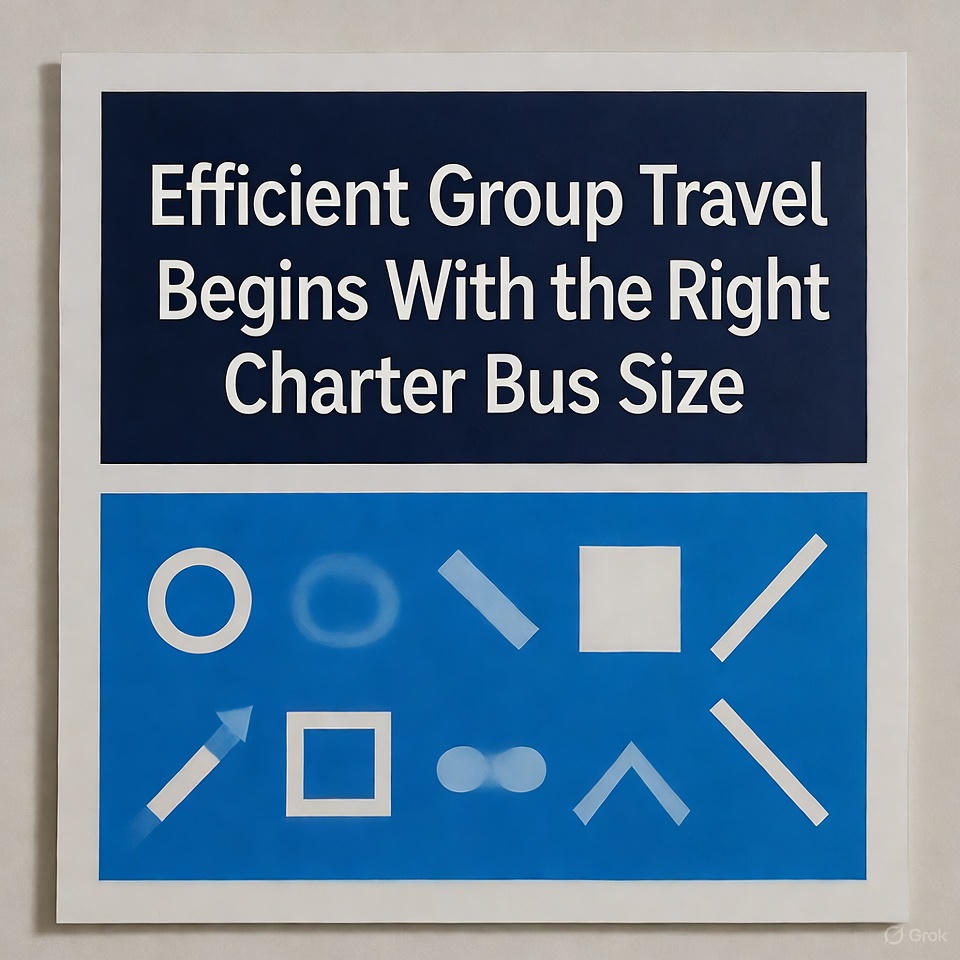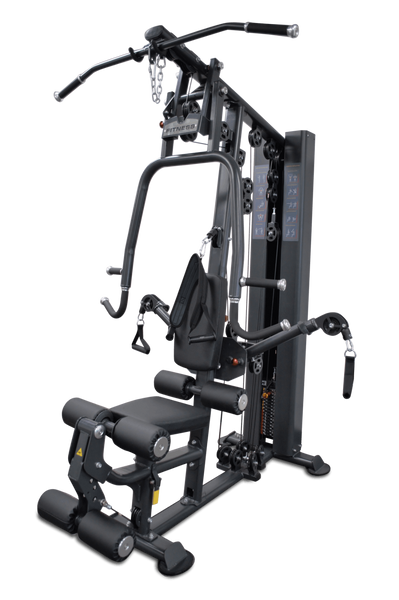Organizing travel for a group, whether it’s a school trip, a corporate retreat, or a family reunion, presents a unique set of challenges. Beyond coordinating schedules and destinations, the logistical nuances can quickly become overwhelming. However, the path to a genuinely Ideal Charter Bus experience, free from unnecessary stress, hinges significantly on one crucial decision: selecting the right vehicle size. This often-underestimated factor isn’t merely about fitting everyone on board; it profoundly impacts comfort, cost-efficiency, and the overall enjoyment of the journey. A well-chosen bus transforms a potentially chaotic endeavor into a remarkably smooth and memorable adventure. It’s the silent architect behind a harmonious travel experience, ensuring that every mile covered contributes positively to the group’s shared objective, be it learning, collaboration, or simply celebration. Prioritizing this foundational element sets the stage for a successful and cohesive group journey from the moment you depart.
Beyond Seating Capacity: Why Size Matters for Comfort and Cost
Selecting a charter bus goes far beyond simply counting heads to match the number of seats. The true impact of bus size ripples through the entire travel experience, profoundly affecting both passenger comfort and the overall financial outlay. An oversized bus, while seemingly offering ample space, translates directly into wasted fuel consumption and unnecessary operational costs, essentially paying for empty seats and unused capacity. Conversely, an undersized vehicle quickly compromises comfort, leading to cramped conditions, insufficient legroom, and a noticeable lack of personal space, which can quickly sour even the most enthusiastic travelers.
The size you choose directly influences several key factors:
- Passenger Legroom and Personal Space: A larger bus provides more room to stretch out, enhancing individual comfort on long trips.
- Luggage Capacity: The underfloor storage and overhead rack space vary significantly between bus sizes, impacting what passengers can bring.
- Onboard Amenities: Larger coach models are more likely to include features like restrooms, Wi-Fi, and power outlets.
- Total Rental Cost: The base price of the charter is directly tied to the size and model of the bus.
- Fuel Efficiency: A right-sized bus uses fuel more efficiently, leading to lower operational costs and a smaller environmental footprint.
- Maneuverability and Access: A larger bus may have difficulty navigating narrow city streets or reaching specific venues with tight access points.
Finding the ideal charter bus strikes a delicate balance, providing enough room for everyone to relax, spread out, and store their belongings comfortably, without incurring superfluous expenses. This equilibrium ensures that resources are utilized efficiently, contributing to a more pleasant journey for all passengers and a more responsible allocation of your budget.
Matching the Bus to the Group: Factors Influencing Your Choice
Determining the appropriate charter bus size necessitates a deeper look into the unique characteristics of your group and the nature of your trip. While the sheer number of passengers is the initial consideration, it’s far from the only one. Crucially, consider the amount of luggage or equipment accompanying your travelers. A band on tour will require significantly more cargo space than a group of executives attending a day conference. Similarly, the duration of the journey plays a pivotal role; longer trips inherently demand more spaciousness for passenger comfort, potentially even for a smaller group, to allow for stretching and relaxation.
| Factor | Analysis: Why It Matters | Bus Feature to Look For |
| Trip Duration | Longer trips require more personal space for comfort to prevent fatigue. | Spacious interiors, reclining seats, onboard restrooms, Wi-Fi. |
| Luggage & Equipment | The volume of bags, sports gear, or musical instruments directly impacts storage needs. | Generous under-bus cargo bays, overhead racks. |
| Group Type | The purpose of the trip dictates amenity priorities. | Corporate: Wi-Fi, power outlets. Tour Group: Panoramic windows, PA system. |
| Passenger Count | The most basic factor ensures everyone has a seat without paying for excessive space. | Minibus (15-30 seats), full-size coach (40-56 seats). |
Specific event needs also weigh in—a team heading to a sporting event might prioritize under-bus storage for gear, whereas a sightseeing tour group might value large windows and comfortable seating above all else. Accurately assessing these varied requirements is paramount to finding the perfect fit.
Navigating the Options: From Minibus to Motorcoach
The charter bus market offers a spectrum of vehicle sizes, each designed to cater to different group needs and travel scenarios. At the smaller end, minibuses typically accommodate 15 to 25 passengers, ideal for intimate gatherings, airport transfers, or short-distance excursions within a city. Moving up, mid-size coaches generally seat between 25 and 35 individuals, striking a versatile balance for various group sizes. A 39 seat bus, for instance, often proves to be an exceptionally popular and versatile option within this category, providing ample seating for a substantial group without the footprint or operational cost of a full-sized vehicle. These buses are often well-suited for medium-sized corporate outings, school field trips, or even multi-family vacations. Finally, full-size motorcoaches are the largest available, typically seating 40 to 56 passengers or more, equipped for long-distance travel with amenities like restrooms and extensive luggage bays. Understanding the distinct offerings of each category is key to making an informed decision.
The Local Advantage: Why Proximity Matters
When arranging group travel, the geographical location of your chosen charter bus provider carries significant, often underestimated, benefits. Opting for a local company means more than just supporting area businesses; it translates directly into tangible operational advantages for your trip. For instance, a Peoria charter bus company will possess an intimate knowledge of local traffic patterns, optimal routes, and any specific municipal regulations, such as parking restrictions near popular attractions or event venues. This localized expertise can be invaluable in ensuring timely arrivals and smooth navigation, especially in unfamiliar territory. Furthermore, in the rare event of an unforeseen issue like a mechanical breakdown, a local provider can offer faster response times and more efficient support, minimizing disruption to your schedule. The reduced travel distance for the bus to reach your pick-up point also often results in more competitive pricing, making a compelling case for keeping your search close to home.
The Ripple Effect: Beyond the Bus Itself
The decision concerning the right charter bus size extends far beyond mere logistics; it creates a profound ripple effect that influences the entire dynamic and success of your group’s journey. A bus that perfectly accommodates its passengers fosters a more positive and interactive group environment. When individuals are comfortable and have adequate personal space, conversations flow more freely, camaraderie builds naturally, and the overall mood remains elevated. Conversely, a cramped or excessively spacious vehicle can subtly detract from these critical elements. Moreover, selecting the optimal size directly contributes to efficiency and timeliness; proper space means quicker loading and unloading of both passengers and their belongings, and a bus that is appropriately sized for the roads it travels can navigate more smoothly, reducing travel time. Ultimately, this meticulous attention to bus selection culminates in heightened passenger satisfaction, transforming a simple transit into a vital, enjoyable component of the entire group experience.





